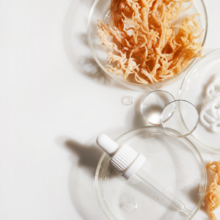Why You Should Eat More Chocolate: Chocolate is Good for Your Teeth
- Published: Monday, June 1st 2015
- in Nutrition
 Have you ever heard that you should not eat chocolate because it will “rot your teeth”? It turns out that this is just a case of mistaken identity. Those high-sugar confections that masquerade as “chocolates” because they’ve got a patina of chocolate schmear over the top of some species of wafer, nougat, or coconut cream whatever, certainly contribute to dental cavities. But the chocolate in this case is just a victim of guilt by association. The sugars cause the cavities, not the cocoa component.
Have you ever heard that you should not eat chocolate because it will “rot your teeth”? It turns out that this is just a case of mistaken identity. Those high-sugar confections that masquerade as “chocolates” because they’ve got a patina of chocolate schmear over the top of some species of wafer, nougat, or coconut cream whatever, certainly contribute to dental cavities. But the chocolate in this case is just a victim of guilt by association. The sugars cause the cavities, not the cocoa component.
In fact, the higher the cocoa content in your chocolate, the lower the sugar content. These two are reciprocal: when one goes up, the other comes down. This is great news for anyone worried about whether chocolate is eating away at their pearly whites.
Plus, the news is even better than that! Not only will high-cocoa chocolate not cause cavities, but your dentist will love you even more because it can prevent those cavities from forming in the first place! Cocoa polyphenols can decrease the formation of biofilm on your teeth and also the production of acid by the streptococcus bacteria.1
Prevent it.
In a study conducted at the College of Dental Sciences and Hospital in Davangere, India, children were instructed not to practice any oral hygiene, such as brushing and flossing, for four solid days! Can you imagine? On the morning of the fourth day, one group was given a “chocolate mouthwash” (a wash that contained cocoa antioxidants). The second group was given a placebo mouthwash with nothing in it. In the cocoa-mouthwash group, the bacteria decreased by 20.9 percent, compared with that in the placebo group—and there was a decrease of 49.6 percent in plaque formation.2
These results were replicated with white lab mice, which were fed white chocolate (with a whopping 35 percent sucrose). But one subgroup was given extract from cocoa powder. The researchers then looked to see which group ended up with dental cavities. They found that the addition of cocoa powder extract blocked bacteria from causing the dental cavities that normally happen under these conditions.3 The antibacterial source of the cavity-fighting yumminess comes from the cocoa bean husk.4
We seriously need this in our toothpaste. Can you imagine someone marketing a “chocolate toothpaste?” Totally counter-intuitive, but also totally supported by the research. And, in lieu of choco-paste showing up on your grocery shelves, you might just stick with your high cocoa chocolate and smile!
[1] GF Ferrazzano et al., “Anti-Cariogenic Effects of Polyphenols from Plant Stimulant Beverages (Cocoa, Coffee, Tea),” Fitoterapia 80, no. 5 (July 2009): 255–62.
[2] RK Srikanth et al., “Chocolate Mouth Rinse: Effect on Plaque Accumulation and Mutans Streptococci Counts When Used by Children,” Journal of the Indian Society of Pedodontics and Preventative Dentistry 26, no. 2 (June 2008): 67–70.
[3] K Ito et al., “Anti-Cariogenic Properties of a Water-Soluble Extract from Cacao,” Bioscience, Biotechnology, and Biochemistry 67, no. 12 (December 2003): 2567–73.
[4] K Osawa et al., “Identification of Cariostatic Substances in the Cacao Bean Husk: Their Anti-Glucosyltransferase and Antibacterial Activities,” Journal of Dental Research 80, no. 11 (November 2001): 2000–4.



